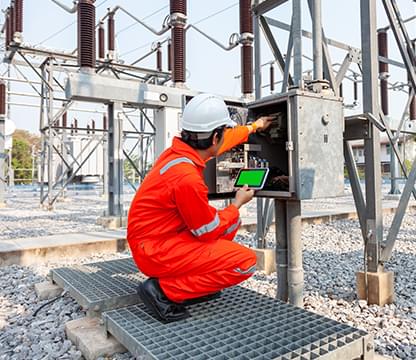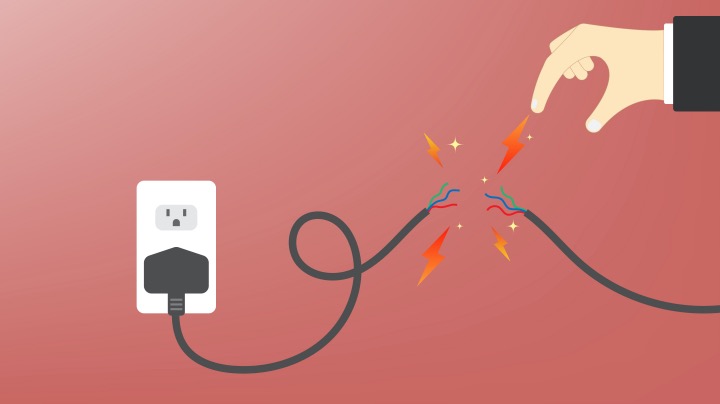Advanced electrical system troubleshooting services for critical applications.
Wiki Article
Top Tips for Effective Electrical System Troubleshooting
Troubleshooting electric systems needs a methodical strategy, based in a detailed understanding of electric concepts and safety and security methods. By acquainting oneself with circuit components, using important tools, and adhering to a structured evaluation approach, experts can successfully identify and resolve problems. Nevertheless, the nuances of reliable fixing expand beyond simple technological expertise; recognizing exactly how to record searchings for and focus on safety and security can dramatically affect end results. As we explore these crucial aspects better, it becomes clear that grasping this procedure is not just advantageous however crucial for success in the area.Understand the Fundamentals
Comprehending the basics of electrical systems is important for efficient troubleshooting, as a strong structure allows technicians to detect and solve concerns a lot more efficiently. A detailed understanding of electric principles, such as voltage, existing, resistance, and power, is essential in identifying the origin triggers of troubles. Voltage is the electric possible distinction that drives existing via a circuit, while resistance opposes the circulation of existing, impacting the total performance of the system.Knowledge with circuit parts, including resistors, capacitors, diodes, and switches, is also paramount. Each part plays a distinct role in circuit habits and can impact performance when malfunctioning. Furthermore, understanding collection and identical circuit setups is crucial, as these plans affect the circulation of voltage and present within the system.
Service technicians should be mindful of possible dangers, such as shock and short circuits, to implement secure troubleshooting techniques. By understanding these foundational concepts, service technicians boost their capability to perform effective diagnostics and repairs, eventually leading to boosted efficiency and dependability of electrical systems (electrical system troubleshooting).
Gather Necessary Devices
Effective troubleshooting of electric systems needs the appropriate collection of tools to diagnose and solve problems accurately. A well-equipped service technician can significantly improve effectiveness and effectiveness in recognizing issues. Vital tools include a multimeter, which measures voltage, existing, and resistance, permitting for precise examinations of electric elements. Clamp meters are additionally important for gauging current without disconnecting the circuit, ensuring security and comfort.In addition, protected hand devices such as screwdrivers, pliers, and cable strippers are critical for safely controling electric links. It is also suggested to have a circuit tester handy to confirm the presence of voltage in electrical outlets and cables. For more complex systems, a thermal imaging cam can aid identify overheating parts, suggesting prospective failures.

Follow a Methodical Strategy
Having gathered the suitable devices, the following action in fixing electric systems is to follow an organized strategy. A systematic method makes certain that service technicians can determine mistakes efficiently and properly, lessening dig this downtime and stopping unnecessary repair services.Begin by examining the system's schematic representations and requirements. Comprehending the design and functional specifications will certainly give context for identifying problems. Next off, separate the problem area by utilizing a procedure of elimination. This entails checking each element systematically, starting from the source of power and functioning in the direction of the tons.
Utilize screening equipment, such as multimeters and oscilloscopes, to gather unbiased information regarding voltage, current, and my latest blog post resistance at different factors within the system. This empirical evidence will certainly assist your troubleshooting efforts and help to confirm or eliminate possible sources of failure.
In addition, take into consideration environmental variables that may influence the system's performance, such as temperature level fluctuations or moisture access. A comprehensive examination of wiring, connections, and components will certainly ensure that all opportunities are accounted for.
File Your Findings
Detailed paperwork is vital in the repairing process of electrical systems. Exact records boost the efficiency of recognizing repeating problems and promote communication amongst employee. Each searching for should be thoroughly kept in mind, including signs and symptoms observed, tests conducted, and the end results of those examinations. electrical system troubleshooting. This practice not just help in understanding the origin of the problem however additionally functions as a reference for future troubleshooting initiatives.
Additionally, preserving a log of parts changed or repair services performed is indispensable. This details supports supply monitoring and can assist assess the long life and dependability of specific elements.
Inevitably, the documents procedure need to be complete yet succinct, enabling very easy retrieval and evaluation - electrical system troubleshooting. By prioritizing detailed documentation, professionals can produce an important knowledge base that not only help in present troubleshooting however also empowers future upkeep initiatives, thereby improving general system integrity

Prioritize Precaution
Identifying the integral threats connected with electric systems check my blog is vital for making certain safety and security throughout troubleshooting. Electric shock, burns, and tools damages are simply a few of the possible threats that technicians face. Prioritizing security procedures is not just a lawful commitment however additionally a moral vital that safeguards both the professional and the surrounding setting.Before starting any troubleshooting task, technicians should wear ideal personal protective tools (PPE), consisting of shielded gloves, safety glasses, and flame-resistant garments. Making sure that the work location is completely dry and without mess can dramatically minimize the risk of mishaps. Furthermore, it is vital to de-energize circuits prior to beginning any type of work, validating that they are not live via the usage of a multimeter or voltage tester.
Developing clear communication methods with employee is additionally crucial; this makes sure that everyone knows possible threats and the status of the electric system being worked with. Having an emergency situation feedback plan in place can prove indispensable in the event of an incident. By prioritizing precaution, technicians can effectively alleviate risks and foster a much safer workplace.
Final Thought
Reliable electrical system troubleshooting counts on a thorough understanding of basic concepts and a systematic technique. Prioritizing safety and security steps guarantees the well-being of individuals involved and the stability of the electric system.Report this wiki page